Shanakyle Bog is over 70 acres in extent located near the village of Parteen and is of conservation interest for three Annex I peatland habitats listed on the EU Habitats Directive including the rare and threatened habitat; active raised bog.
Shanakyle Bog Restoration Group was founded by landowner Catherine Ní Ciardha and Ecologist Barry O’Loughlin who embarked on an ambitious project to restore and rewet the raised bog habitats. The bog was previously managed for domestic turf cutting in the traditional hand cut method using the ‘slean’ and the practice of turf cutting ceased in the 1980’s. In 2021, Shanakyle Bog Restoration Group was awarded funding from the Department of Agriculture, Food and the Marine’s (DAFM) locally led EIP scheme (under the Rural Development Programme) to restore and rewet 30 acres of raised and cutover bog; create a wildlife pond; install bird nest boxes and bat roost boxes; carry out an invasive species eradication programme; and manage 10 acres of grassland for wildflower meadow creation to link in with the All Ireland Pollinator Plan. This work was implemented under the project; Shanakyle Bog Restoration and Habitat Enhancement Project EIP. Our community project aims to promote and raise awareness of raised bogs and peatland restoration among the local farming community and wildlife interest groups.
Shanakyle bog comprises a diverse range of habitats and wildlife. Habitats include raised bog, cutover bog, bog woodland, scrub, oak treelines and dry neutral grassland. The bog supports a range of red listed bird species of conservation concern in Ireland, in addition to mammals protected under the Irish Wildlife Act such as badger, red squirrel, hare, pygmy shrew, bats and pine marten. The peatland habitats support the all-important Sphagnum moss, also known as the ‘bog builder’. There are eight different species of Sphagnum recorded on the bog that give rise to a spectacular display of colours consisting of deep crimson red, ochre, dark green, salmon pink and bright yellow sprawled over the bog surface. Other plants include bog cotton, bog asphodel, ling heather, cross-leaved heath, white-beak sedge, and the carnivorous sundews. The bog woodland is dominated by downy birch with rowan and oak. The wildflower meadows along the western margin support a number of wildflowers including common spotted orchid, eyebright, red bartsia, ox-eye daisy, knapweed, tormentil, hawksbeard, common birds-foot trefoil, meadow sweet and cuckoo flower which offer a haven for pollinators. The rewetted bog pools support damselflies, dragonflies and common frog while the wildlife pond is of conservation interest for smooth newt.
Shanakyle Bog Restoration Group is engaged with a range of statutory and non-statutory organisations to promote and record biodiversity and carbon resilience in the wider community. Our key partners include the National Parks and Wildlife Service (NPWS), BirdWatch Ireland (Limerick Branch), Irish Wildlife Trust (Limerick Branch), Clare County Council’s Heritage Officer; and the Community Wetlands Forum (CWF).
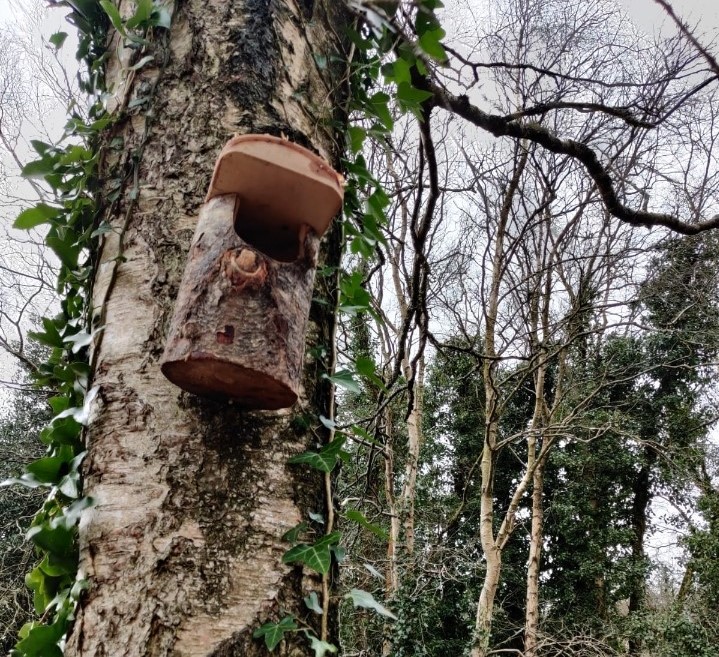

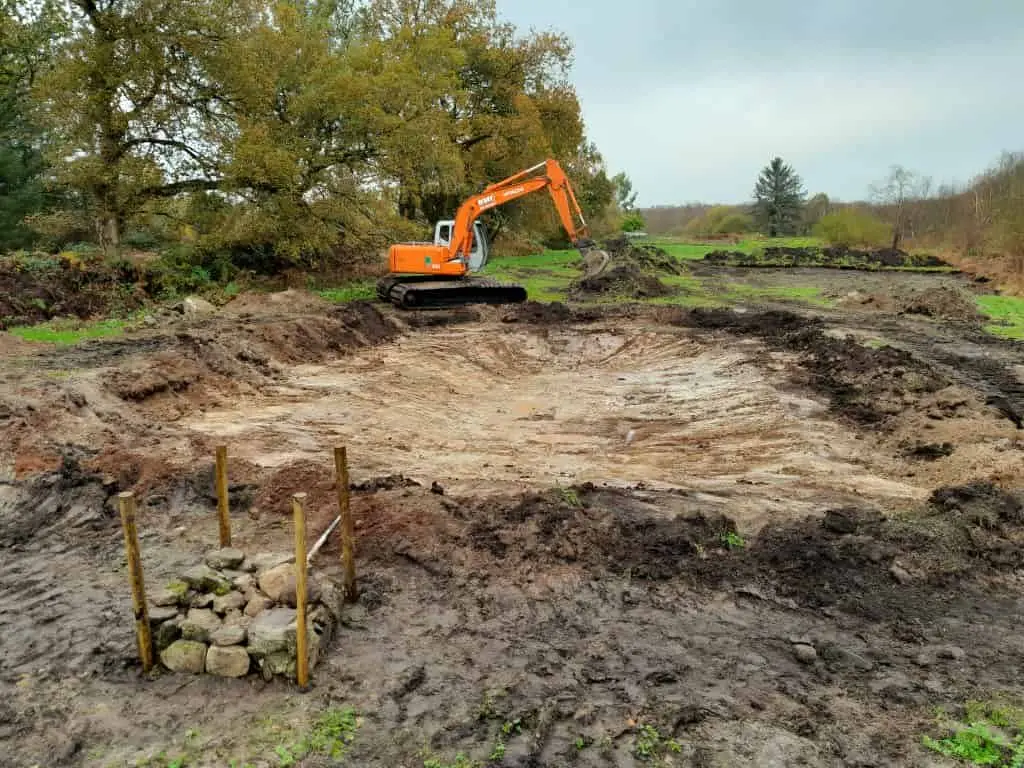

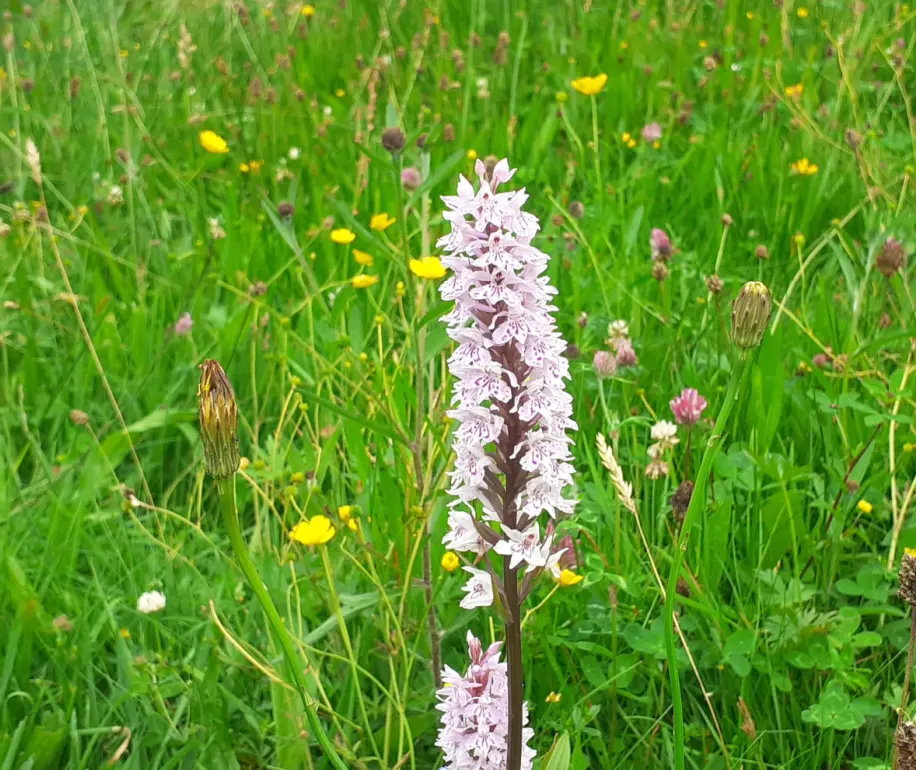



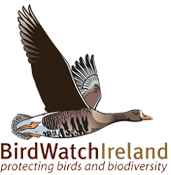

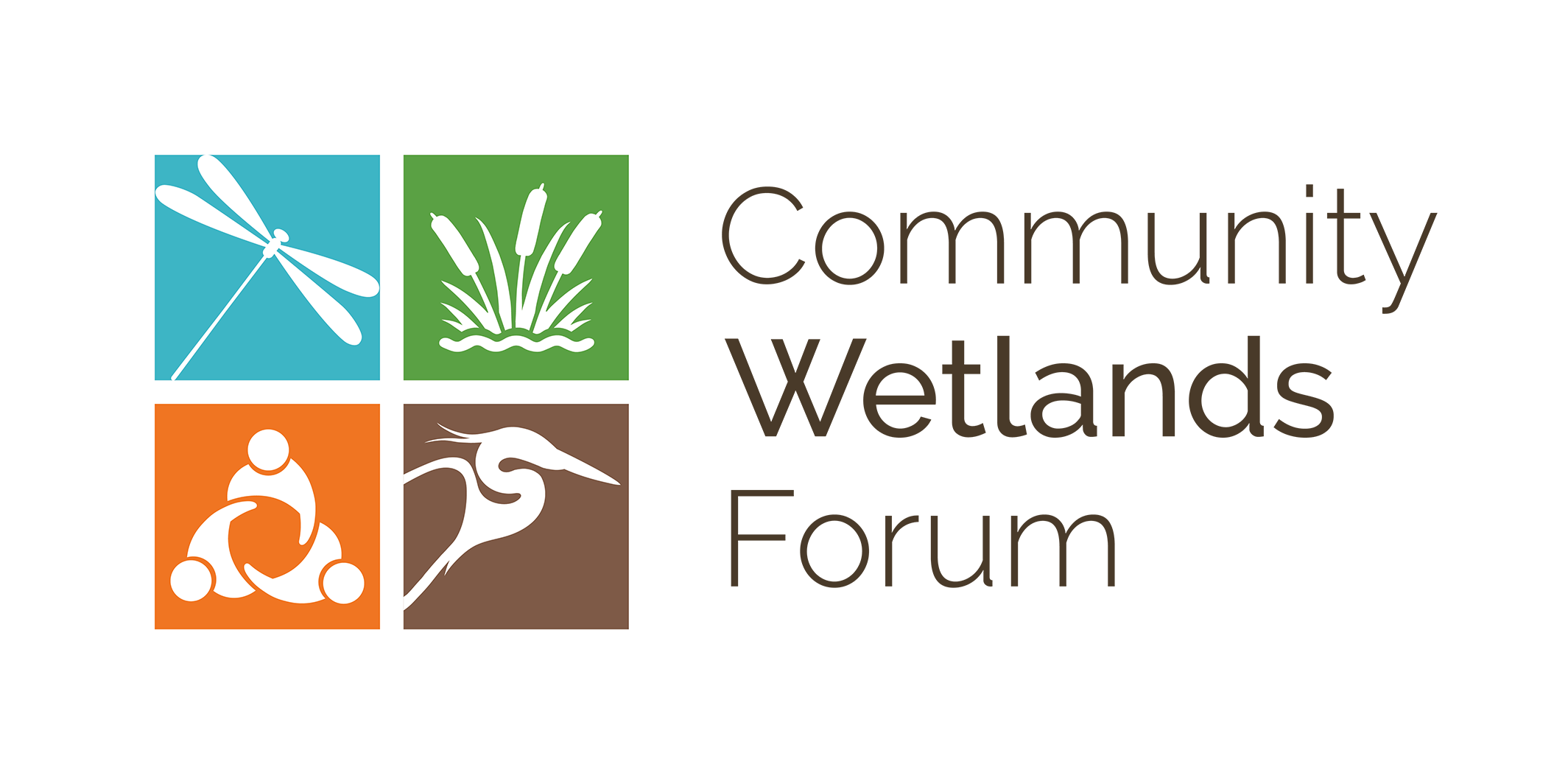



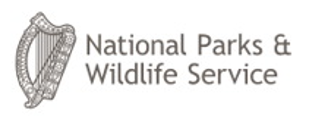

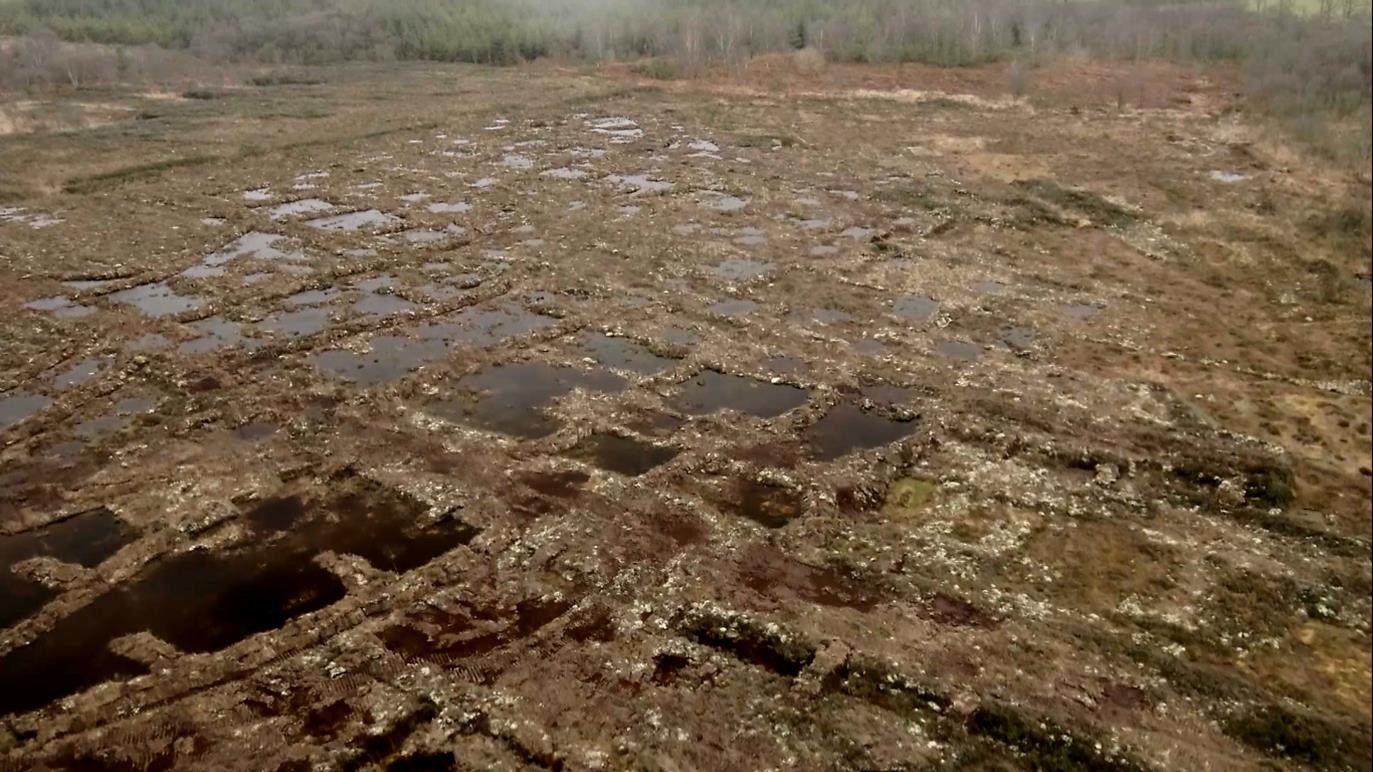

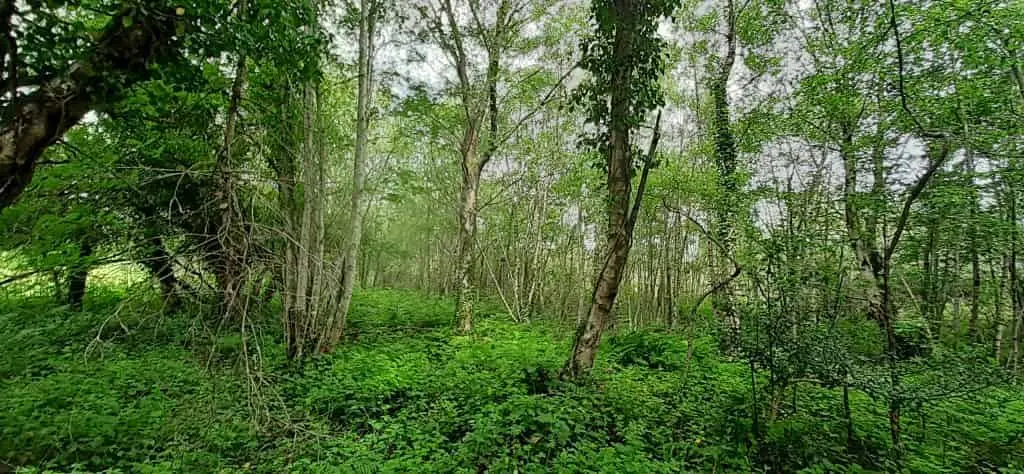

In October and November 2021, a wildlife pond measuring 15 m x 12 m was created in an area of semi-natural grassland located in the southern section of the study area. The pond was excavated comprising a saucer-shaped profile with a gentle gradient to support the establishment of wetland plants at the pond margins. The pond is <1 m in depth. A stone hibernacula was constructed adjacent to the pond to provide a micro-habitat for wintering smooth newt. Log piles from windblown trees were left adjacent to the pond margins to provide a habitat for invertebrates. In December 2021, a selection of reed mace plants was transplanted to the pond to kick start vegetation colonisation which resulted in successful establishment of the plant species by May 2022. It is envisaged that the new pond will serve as a wildlife refuge for amphibians, damselflies, dragonflies, wetland plants and waterbirds.
Approximately 12 ha (30 acres) of Shanakyle Bog was targeted for peatland restoration and rewetting measures. The rewetting work commenced in October 2021 and was completed in December 2021. The work was concentrated on the western side of Shanakyle Bog. A hydrologist was engaged to carry out hydrological studies. Contractor Kevin Farrell carried out the construction of peat dams and bunds and Ecologist Barry O’Loughlin oversaw the restoration and rewetting work. A combination of peat dams and peat bunds were installed on the high bog. Peat dams were installed within the main drainage channel along the western boundary of the bog to ensure reduced functional drainage systems were managed as non-functional drainage systems and to block preferential flow paths associated with drainage ditches. A network of peat bunds were installed on cutover bog on the north-western section of Shanakyle Bog. Peat dams were also installed within drainage channels on the cutover. The rewetting management strategy implemented at Shanakyle Bog will be effective by allowing the bog to respond naturally to rewetting measures. The restoration and rewetting work has resulted in a reconfigured wetland habitat which is set on a positive trajectory for Sphagnum and active raised bog development and an improvement in the habitat quality of degraded raised bog. It is anticipated that the habitats of Shanakyle Bog will transition from a net carbon source to a net carbon sink in the medium to long-term.
In February and June 2022, approximately 30 bird next boxes were installed concentrated in habitats comprising bog woodland, treelines and outhouses. It was the vision of Shanakyle Bog Restoration Group to enhance the existing habitats for wildlife and at the same time attract new native bird species into the project area. Shanakyle Bog is a biodiversity hotpot surrounded by an agricultural landscape and ribbon development and supports over five red-listed bird species of conservation concern in Ireland. The bog supports several species of raptor including sparrowhawk, kestrel and buzzard. Taking into consideration predator prey relationships on a relatively small bog and the overall size of the bog, different bird nest boxes were installed to cater for a diverse range of species including barn owl, treecreeper, swift, swallow, kestrel, woodpecker, wren, robin, blackbird, house sparrow and blue tit amongst others.
Over 20 bat roost boxes were installed on mature oak tree trunks in April 2022. The oak treelines already comprise cracks, crevices and fissures that serve as suitable potential roost habitat for bats. The installation of bat boxes aims to provide additional roosting habitat and attract diverse species to the site. Several boxes were installed on the same tree trunk facing in different directions to account for temperature changes day to day. The bat boxes were placed on treelines which offer suitable commuting habitat to link in with other habitats present within the site including bog woodland and raised bog. A range of different models were installed including Beaumaris WoodStone Bat Box, Harlech WoodStone Bat Box and Chillon WoodStone Bat Box. Shankyle Bog Restoration Group have commissioned a dedicated bat survey which will be carried out in July 2022 by a bat specialist to ascertain bat species present within the study area and bat roost locations.
Approximately 10 acres of grassland is being managed for wildlflower meadow creation to link in with the ‘All Ireland Pollinator Plan’. The grassland habitats are currently grazed by ponies. Bracken is a problematic species which had encroached onto a lot of the grassland habitat located in the southern section of the study area. The grass was mowen in late August 2021 to encourage the growth of late season wildflowers. The management regime avoids any input of fertiliser, pesticides or herbicides. In addition, the introduction of artificial wildflower seed was avoided. As the meadows already contained a good diversity of wildflower seeds, it was a vision of Shanakyle Bog Restoration Group to maintain the grassland in a natural condition. The grasslands comprise the following wildflowers; red bartsia, meadowsweet, creeping buttercup, meadow buttercup, common spotted orchid, white clover, red clover, oxeye-daisy, common bird’s-foot trefoil, water-mint, eyebright, common field-speedwell, tormentil, common knapweed, hedge woundwort, hawksbeard, cuckooflower, cat’s-ear and tufted vetch. In April 2022, the stocking rate of ponies was increased slightly to keep bracken down.
Surveys for scheduled invasive species (listed on the ‘Third Schedule’) were carried out in compliance with Regulation 49 of the European Communities (Birds and Natural Habitats) Regulations 2011 (as amended) which includes legislative measures to deal with the potential dispersal and introduction of invasive alien species. Rhododdendron was recorded on the western section of the bog. The level of infestation is low (six stands recorded in total); however, in order to prevent further spread of the species, Shanakyle Bog Restoration Group commissioned an invasive species specialist to identify, map, treat, control and where possible eradicate scheduled invasive species. Stands of the scheduled invasive species Himalayan Balsam and Giant Hogweed were recorded along a local access road which provides access to the bog from the west. An Invasive Species Management Plan (ISMP) was prepared outlining treatment options to eradicate all three scheduled invasive species. The first treatment was carried out in August 2021 where stands of Rhododendron plants were cut to ground level as close to the main root system as possible and treated with herbicide applied through drilled holes in the stump and then sealed. A single stand of Giant Hogweed was treated in August 2021. Himalayan balsam was treated through hand pulling techniques twice annually; from May-June 2022 and August 2022. The work will control and eliminate threats and pressures associated with invasive species on peatland habitats of conservation interest.
Have any questions? Get in touch using the form below